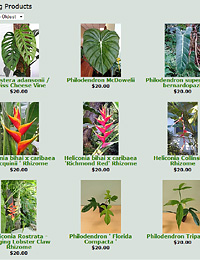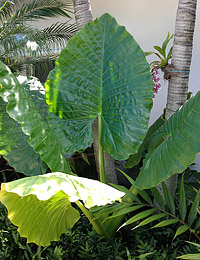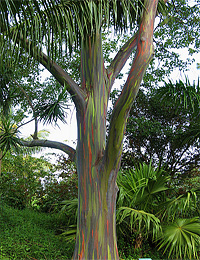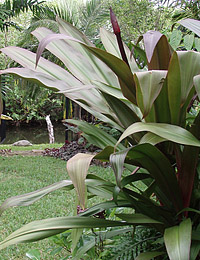PHILODENDRON / MONSTERA / RHAPHIDOPHORA
It is important to wait until roots are clearly seen growing out of the bottom of the pot your plant came in *before potting up or repotting* This is important for a number of reasons- your plant just went through a shipping process, and overpotting can cause root issues if done too soon. It is best to be patient and wait until the plant is clearly rooting its way out of the original pot before removing it.
Choose a soil mix that is rich with organic material (dark), but has plenty of chunky aggregate like fine pine bark mulch (orchid bark) and/or Perlite (not vermiculite or peat) mixed in to **ensure good drainage.**
Perlite is OK for Philos, but it actually holds alot of water, so I prefer finely chopped Pine Bark/Orchid Bark mixed 2 parts to 1 part soil is best.
WATERING:
The pot MUST have drainage holes (preferably large ones at the bottom) Philodendron & Monstera like to dry down a little bit between waterings, and almost always don’t like to sit in a soggy situation. If your pot drains, but you are using a bottom saucer, be sure there is no water sitting in the saucer within 24 hours of watering- if so, remove the water.
A sign of overwatering is lower leaves and/or tips turning yellow quickly, within a day or two after a good watering. Usually, this is the plant saying its had too much.
A sign of underwatering is persistant small yellow spotting on the newer leaves. I say persistant because many philos have a little bit of a dark speckling on new leaves that tends to go away as it matures. If you see a constant yellow/white speckling or streaking showing up on newer leaves that wasn’t on older ones, try giving a bit more water.
*MONSTERA DELICIOSA SPECIAL WATERING INSTRUCTIONS*
Monstera deliciosa does not want to be overwatered. Keep this plant on the DRY side. Do not repot until you see roots growing out of the pot, as we use a special high-draining mix in the pot it comes in, and overpotting can cause similar problems. Only water this plant in small amounts to remoisten the soil (do not flood heavily with water) about 1x per week- 2x max. If the plant does not seem to be wilting/drooping, it does not need any more water. Keep in mind, the less light the plant receives, the less it will need to be watered.
FERTILIZING:
Outdoors in the ground/growing up supports Philodendron can usually take a good amount of watering and fertilizer.
Indoors, however, everything must be in lower doses- there is usually less light, so that dictates less watering and less feeding.
Osmocote is a great fertilizer for indoor plants, as it truly slow releases. I use Osmocote for Philodendron in indoor situations, as well as a half-to-one-third strength Miracle Gro solution no more than once per week. If I watered with Miracle Gro the last time, I will use only water the next time, etc.
In my garden, I occasionally spray the yard down with Miracle Gro from a hose end sprayer. This is in addition to granular slow release fertilizer.
CLIMBING:
Most Philodendron climb, and have various stages of growth- in the “seeking” stage, the leaves stay small and the plant grows long a viney, looking for something to climb. Many will grow towards SHADE, thinking that a tree trunk might be there.
Once they attach well to a support/trunk, they go into a climbing stage, where the leaves will get bigger, it will get a thicker stem and the leaves will start to morph into the mature shape. Finally, in the mature stage, the plant has many tendrils attaching it to the support and the leaves have become very big and show the mature shape. Often flowering will occur, and sometimes the plant can even become unattached from the ground, deriving its moisture etc from its support.
If your plant is a climber, you will want to allow it to attach to a support if outside (tree trunk, wall, fence, pole) or give it a totem if grown indoors in a pot.
Pieces of wood, such as a fence plank, or a length of bamboo are decent choices. But they can eventually rot out under the soil and fall over. A longer term totem can be made from a length of PVC pipe, with Burlap or Cocomat wrapped around it and secured with twine, wire or plastic string. The PVC won’t degrade, and the plant can really dip its tendrils into the wrapped texture. Sometime you can find these “moss poles” available at garden centers.
LIGHT:
Most Philos like a bright, but indirect light. A light morning sun is usually OK, but midday to afternoon sun should be broken up with shade.
A heavy shade is also to be avoided, as this can make for a weak, stretchy plant.
Indoors, always try to find a bright spot, but avoid direct sun on the leaves, unless its early AM sun.
Always start a new plant in a shadey spot and slowly acclimate to more light, or burn on the leaves can result.
Remember to have FUN!






